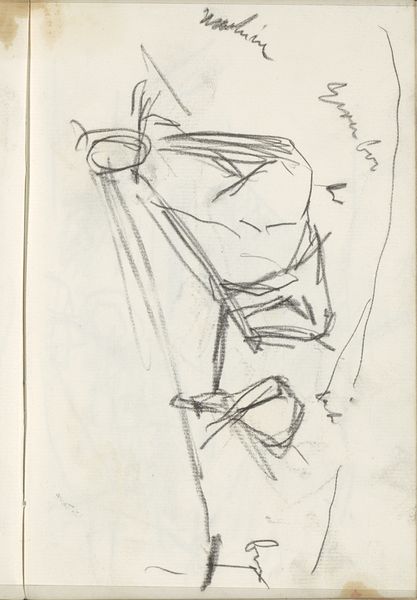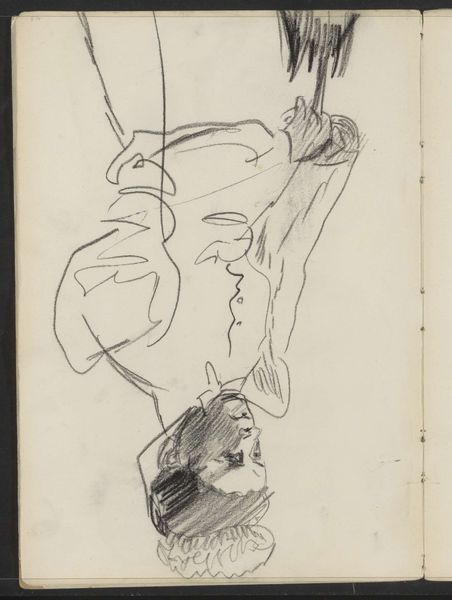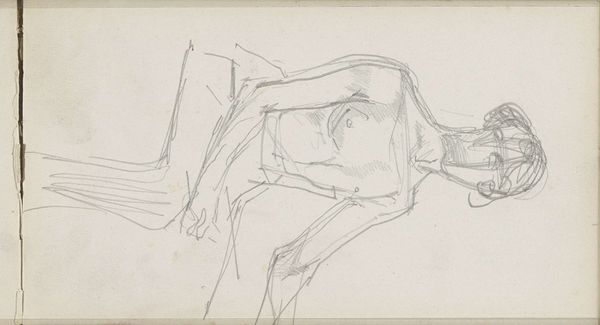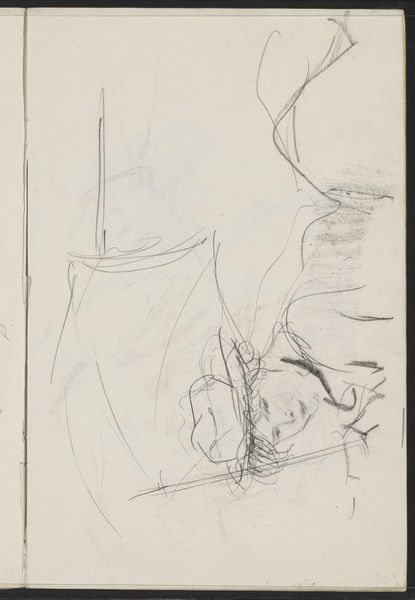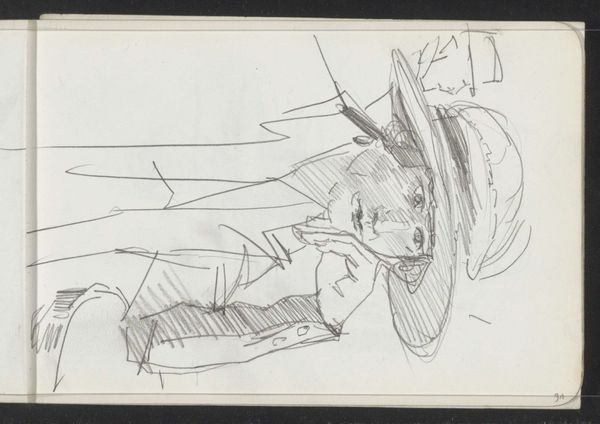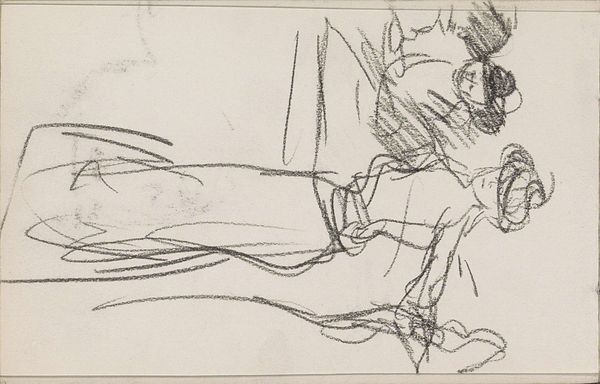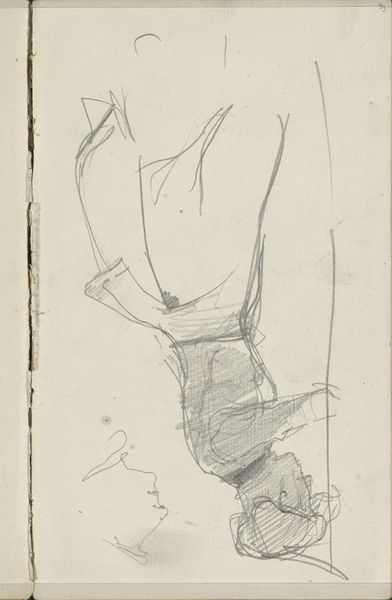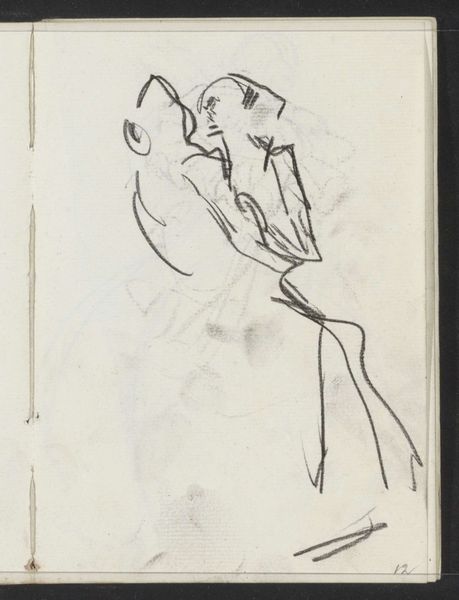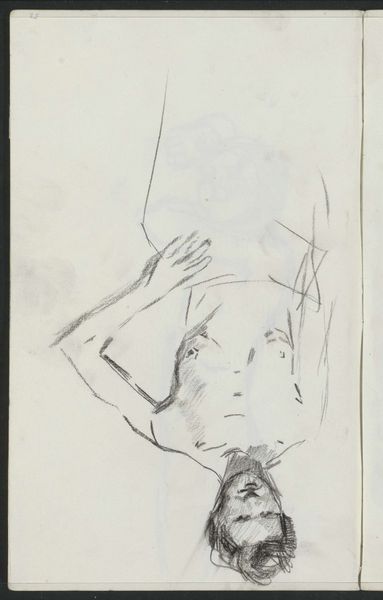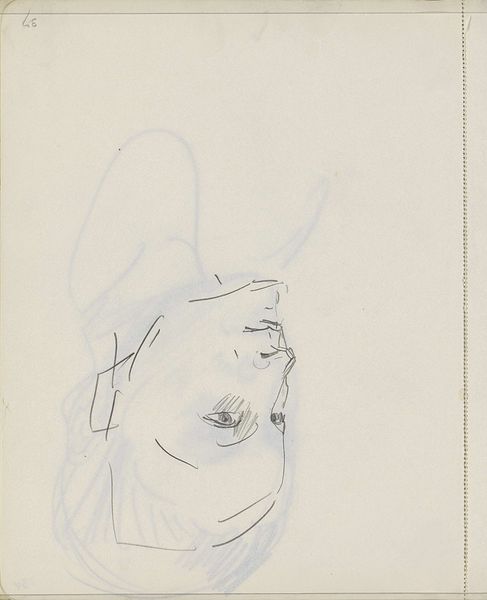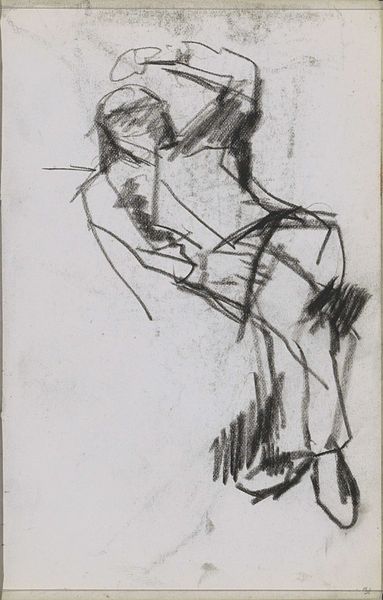
#
amateur sketch
#
light pencil work
#
pen sketch
#
pencil sketch
#
personal sketchbook
#
idea generation sketch
#
ink drawing experimentation
#
pen-ink sketch
#
sketchbook drawing
#
sketchbook art
Copyright: Rijks Museum: Open Domain
Curator: Let's consider this intriguing sketch by Isaac Israels, titled "Vrouwenhoofd," created sometime between 1875 and 1934. It’s part of the Rijksmuseum collection. Editor: My first impression is one of fragility. The rapid, almost hesitant lines give the figure a fleeting, ephemeral quality. I feel as if she might vanish if I look away for too long. Curator: Precisely. The structure of the composition lies in these very lines, each contributing to the overall form. Notice how the hatching technique models the planes of her face, defining shape and suggesting depth with such economy. Editor: It looks like a study from a sketchbook, almost like a practice sketch done in situ. This informs how I see the work. It draws attention to the artist’s labor; pencil on paper to achieve representational skill. Where was the sketchbook manufactured? Whose labour manufactured the materials? These are the critical questions here. Curator: While your attention to materials is important, I'm also struck by the purely aesthetic dimensions of this work. Consider the asymmetry of the head; the eyes subtly misaligned, adding a hint of melancholy or perhaps even a quiet defiance to her expression. It’s also representative of the wider social shift occurring around portraiture at the time as photography grew in prominence as a popular medium. Editor: Yet, what kind of pencil did he use? Soft lead allows for those quick shadows you observe. Examining the socio-economic context of art materials reveals significant aspects. Access to high-quality supplies defines the kind of artwork that can be achieved, even a sketch such as this one. Curator: Still, one can’t overlook the formal accomplishments. The handling of line, the deliberate lack of detail—it all points to Israels' masterful control, even in this informal study. We are granted access to a way of seeing as well as being allowed a brief window into the artist's way of developing work. Editor: In the end, it is the connection to the materials and process that fascinates me here – considering those untold stories woven into the art making and where it took place. Curator: Yes, by blending these perspectives we have considered many narratives bound within this artwork.
Comments
No comments
Be the first to comment and join the conversation on the ultimate creative platform.

